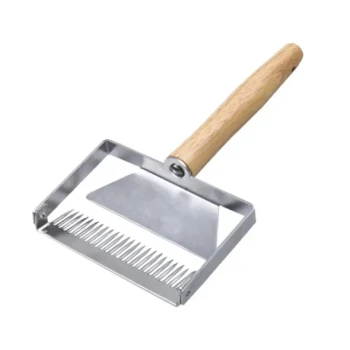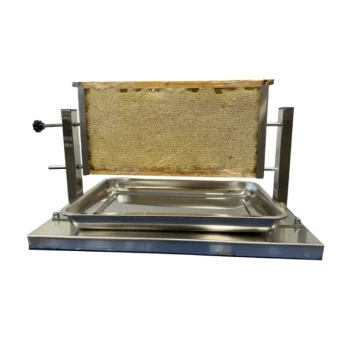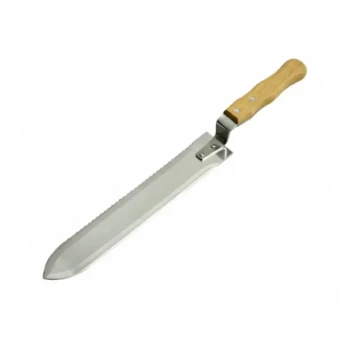Yes, it is perfectly safe to heat crystallized honey. The process of crystallization is completely natural and does not indicate that the honey has spoiled or gone bad. Applying gentle heat is simply a way to re-dissolve the glucose crystals that have formed, returning the honey to its smooth, liquid state.
The goal is to gently re-dissolve the sugar crystals, not to cook the honey. Applying low, indirect heat will preserve its delicate flavors and beneficial compounds, whereas high or direct heat can degrade its quality and create safety risks.
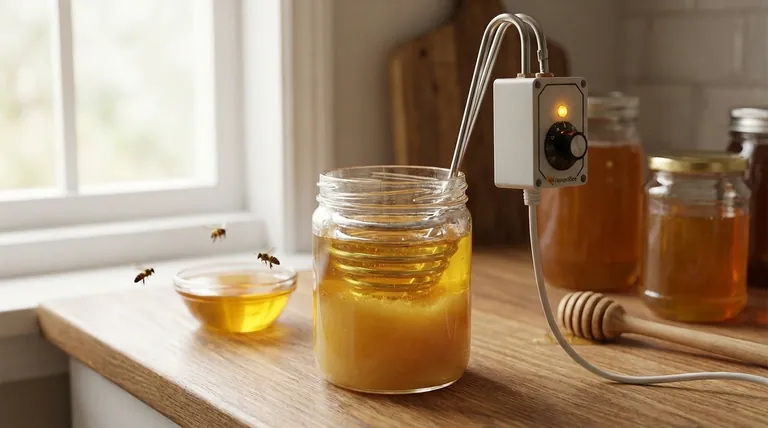
Why Honey Crystallizes
Before restoring your honey, it's helpful to understand why this happens. This knowledge helps you store it correctly and appreciate that it's a sign of high-quality, natural honey.
A Natural Process, Not Spoilage
Crystallization is the process of glucose, one of the main sugars in honey, separating from the water content and forming tiny crystals. It is not a sign of contamination or spoilage. In fact, crystallized honey is perfectly safe to eat and preferred by some for its thick, spreadable texture.
The Role of Glucose and Fructose
Honey is a supersaturated solution of sugars, primarily glucose and fructose. Glucose has a lower solubility than fructose, meaning it tends to solidify or "crystallize" more easily.
Honey with a higher glucose-to-fructose ratio (like clover or dandelion honey) will crystallize much faster than honey with a lower ratio (like acacia or tupelo honey).
What Triggers Crystallization?
The main triggers are temperature and the presence of particles. Honey crystallizes most rapidly at temperatures between 50-65°F (10-18°C). Small particles of pollen, beeswax, or even existing sugar crystals can act as "seeds" that initiate the crystallization process.
The Best Methods for Re-liquefying Honey
Your method for warming honey directly impacts its final quality. The key is gentle, controlled heat.
The Warm Water Bath (Recommended Method)
This is the safest and most effective way to restore honey while preserving its beneficial properties.
- Place your sealed honey container (glass is ideal) into a pot of warm water.
- Gently heat the water on the stove, but do not let it boil. Keep the temperature below 110°F (43°C) to protect the honey's delicate enzymes and aromas.
- Turn off the heat and let the jar sit in the warm water, stirring the honey occasionally, until the crystals dissolve. This may take 20 minutes to an hour depending on the size of the jar and the extent of crystallization.
Using a Microwave (The Fast but Risky Method)
While the microwave is an option for those in a hurry, it comes with significant risks and is generally not recommended.
The intense, uneven heat of a microwave can easily create hotspots that scorch the honey, altering its flavor and destroying its beneficial compounds.
Understanding the Trade-offs
Choosing how to heat your honey involves a trade-off between speed and quality.
Heat and Honey's Quality
Excessive heat is the primary enemy of high-quality honey. Temperatures above 110°F (43°C) can begin to degrade or destroy the natural enzymes, antioxidants, and aromatic compounds that make raw honey so unique. Overheating essentially "cooks" the honey, diminishing its nutritional value and complex flavor.
The Container Matters
Never microwave honey in a standard plastic container unless it is explicitly labeled as microwave-safe. The plastic can warp, melt, or potentially leach chemicals into the honey. Even with a glass jar, the honey itself can become dangerously superheated, posing a significant burn risk when handled.
Will It Re-crystallize?
Yes, it is very likely that re-liquefied honey will crystallize again over time. This is a natural cycle. To slow it down, store your honey at room temperature (around 70-80°F or 21-27°C), not in a cool pantry or refrigerator.
Making the Right Choice for Your Goal
Ultimately, the best method depends on your priorities.
- If your primary focus is preserving the full nutritional and flavor profile: Use the gentle warm water bath method and keep the temperature low and controlled.
- If your primary focus is speed and convenience: You can use a microwave in short 15-30 second bursts on a low power setting, but only with a microwave-safe container and with extreme caution to prevent overheating.
- If you are unsure about the container material: Always opt for the warm water bath method to avoid any risk of melting plastic or creating a safety hazard.
By understanding how to properly manage heat, you can easily restore your honey's liquid texture while preserving its quality.
Summary Table:
| Method | Recommendation | Key Temperature | Main Risk |
|---|---|---|---|
| Warm Water Bath | Highly Recommended | Below 110°F (43°C) | Minimal risk; best for quality |
| Microwave | Use with Caution | Uncontrolled, uneven heat | Scorching, quality loss, safety hazard |
For commercial apiaries and distributors, proper honey handling is key to product quality. HONESTBEE supplies durable, high-quality beekeeping equipment designed for efficient harvesting and storage. Ensure your honey maintains its premium quality from hive to jar. Contact our wholesale team today to discuss your equipment needs.
Visual Guide
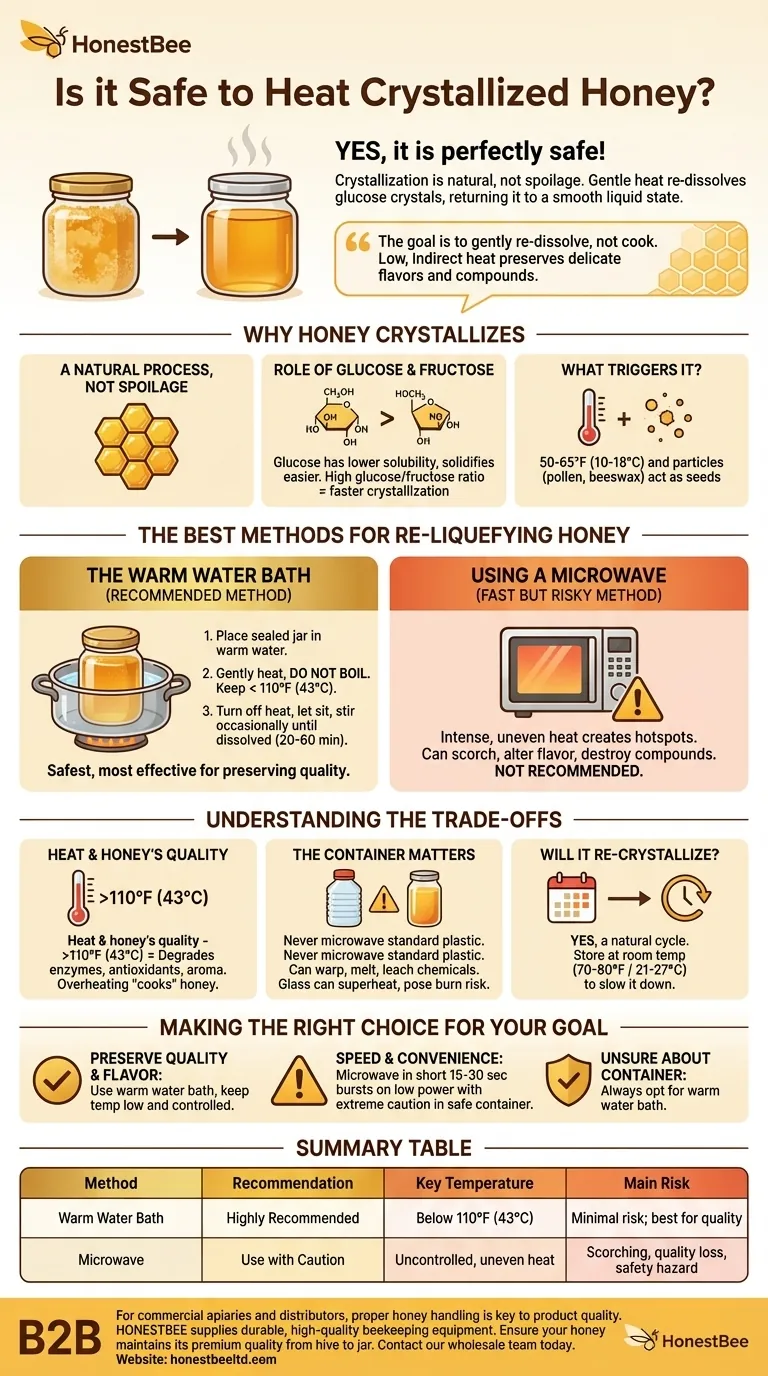
Related Products
- Professional Thermostatic Conical Honey Melter
- Honey Concentrating Vacuum Heating Thickening Machine Dehumidifier for Honey
- High Quality Honey Dehumidifier Dryer Thickening Machine for Beekeeping
- Economy Small Scale Honey Dryer Dehumidifier Thickening Machine
- 8-Frame Electric Self-Reversing Honey Extractor Spinner for Commercial Honey Extraction Equipment
People Also Ask
- What are the negative effects of overheating honey? Preserve Your Honey's Natural Quality
- At what temperature does honey flow? Preserve Quality with the Perfect 95°F Sweet Spot
- What is melter honey used for? A Low-Cost Ingredient for Bakers and Brewers
- How does the Bee Blanket help maintain honey quality? Preserve Enzymes with Gentle Hive-Mimicking Heat
- What is the effect of heating on honey? Preserve Quality with Controlled Warming





